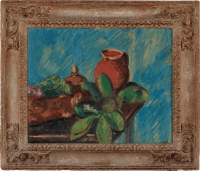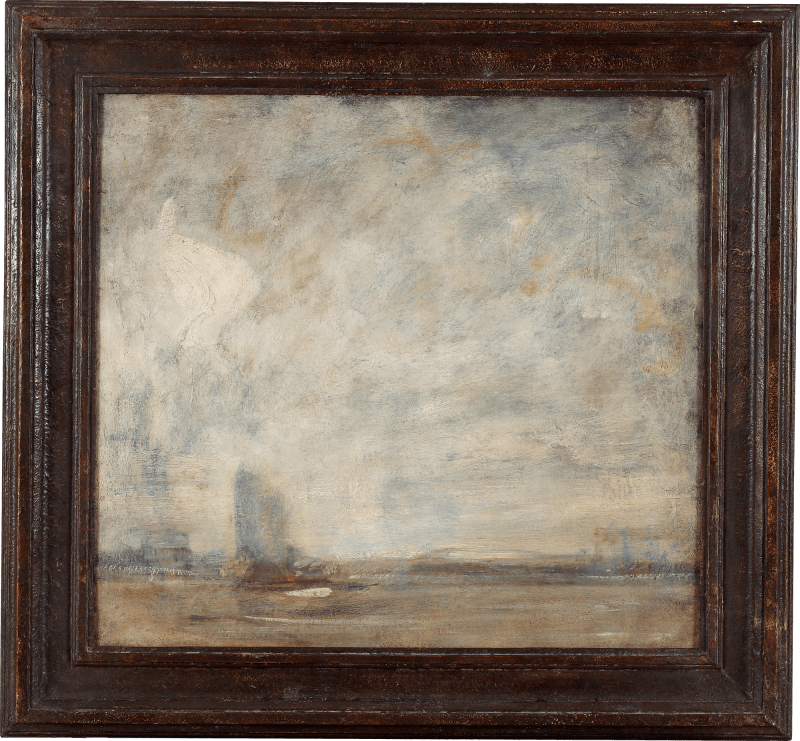‘Every movement of the brush on the canvas alters the shape and implications of the image. That is why real painting is a mysterious and continuous struggle with chance.’ – Francis Bacon on Matthew Smith.
Smith was a vehement colourist and a crucial proponent of post-impressionist art in Britain. His paintings, celebrated by modern titans such as Roger Fry and Francis Bacon, are governed by their sweeping brushstrokes and bold development of fauvist colours.
In 1911, Smith studied under Henri Matisse in Paris at the Académie Matisse (a private and non-commercial school that operated from 1908 until 1911) – the same year that Matisse was producing works such as The Red Studio. The influence of post-impressionist colour theory sustained a steady influence throughout Smith’s career, as evidenced in Still Life with Green Leaves.
Although Smith was undeniably influenced by post-impressionism and fauvism, he developed his own distinct style. His paintings produced throughout the 1930s and 1940s are freer in...
‘Every movement of the brush on the canvas alters the shape and implications of the image. That is why real painting is a mysterious and continuous struggle with chance.’ – Francis Bacon on Matthew Smith.
Smith was a vehement colourist and a crucial proponent of post-impressionist art in Britain. His paintings, celebrated by modern titans such as Roger Fry and Francis Bacon, are governed by their sweeping brushstrokes and bold development of fauvist colours.
In 1911, Smith studied under Henri Matisse in Paris at the Académie Matisse (a private and non-commercial school that operated from 1908 until 1911) – the same year that Matisse was producing works such as The Red Studio. The influence of post-impressionist colour theory sustained a steady influence throughout Smith’s career, as evidenced in Still Life with Green Leaves.
Although Smith was undeniably influenced by post-impressionism and fauvism, he developed his own distinct style. His paintings produced throughout the 1930s and 1940s are freer in their application of paint in comparison with his earlier paintings, which maintained a fauvist application of colour-blocking. Many of Smith’s still-lifes from this period are distinctive for their bold backgrounds, rendered in vigorous strokes of paint, applied with a thick brush. The result, in this instance, is a still-life composition that is propelled into the foreground – the verdant green leaves and terracotta-toned sculpture placed on the table appear as if to reach out of the picture plane itself.
Smith rarely worked from preliminary studies, preferring to draw his composition in thin paint, diluted with oil, directly onto a blank canvas.[1] If he needed to re-work the composition, he would wash off the paint and start again. This instinctive and direct method of painting from life results in honest and dynamic compositions, such as in this still life.
Smith’s work was shown at the Venice Biennale in 1938, just prior to the execution of this still-life, and again in 1950. His major retrospective at Tate in 1953 confirmed his status as a creative trailblazer within early twentieth-century modernism and his works are now in the collections of national institutions, including Tate, The National Portrait Gallery, The Courtauld, and the British Council collection.
[1] Rothenstein, J. (1953) ‘Mathew Smith: Paintings from 1909 to 1952’, Tate. Available via: https://www.tate.org.uk/whats-on/tate-britain/matthew-smith-paintings-1909-1952 (accessed on 01.09.2022).











